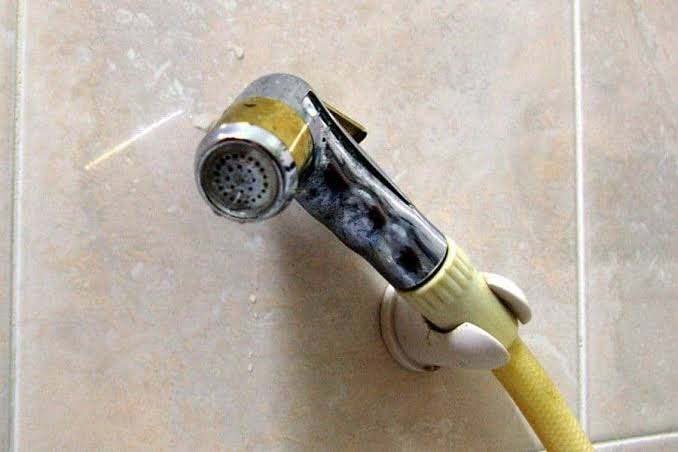I think it's kinda interesting that there's a whole universal force that kinda goes uncommented upon in popular physics. I also don't know anything about the strong nuclear force, but I heard someone say once that it's actually just electromagnetism on a small scale? If there was, like, a good documentary that centers the history and experiments that lead researchers to conclude the existence of these things, that would be helpful. Being able to situate research in historical context really goes a long way to getting my head around a concept.
I am no physicist, but I like to learn about subatomic physics, so I'll explain my understanding of the weak and strong forces.
So, protons and neurons are made of smaller particles call quarks, and they come in 6 varieties or flavors: up, down, charm, strange, top, and bottom. The weak nuclear force can convert one flavor of quark to another. An example of this is in nuclear decay. A proton is two up quarks and a down quark. A neutron is made of two down quarks and an up quark. The weak nuclear force can flip an down to a up, and this will change the neutron to a proton. But a neutron is slightly heavier than a proton, so an electron is released. This is known as beta decay.
The strong force is kinda two forces by my understanding. One the the force that holds the quarks together to make the particle, and the other force holds the nucleus of an atom together. The first is mediated by gluons and the second is mediated by mesons (particles with 2 quarks).
I am a physicist, and I can tell you that it has something to do with neutrinos, and like nuclear fission stuff, and, uh, parity of some kind?
Strange quarks ? Color charges ? Gluon field strength tensors ?
I mean it's become pretty obvious they're making it up as they go along
From what I understand they decided to get wacky with the terminology because using descriptors that were relatable was screwing up their thinking because there's nothing relatable once you start subbing for atoms.
yeah "spin" and "electron orbits" are not like how we think of them as analogies and it's frustrating to learn things a "wrong" way rather than an incomplete one.
Yes atom means indivisible for example which is hilarious. Proton means first particle which is also hilarious.
Rotating all of jupiter's moons in my mind.
I don't understand what a singularity is and probably never will.
I'm not 100% certain but I believe that the Weak Force is why the Four Fundamental Forces of Nature are sometimes referred to instead as the Four Fundamental Interactions of Nature. I believe it involves a neutrino combining with a neutron to create a proton, electron, and antineutrino, with the overall result manifesting as nuclear decay due to the instability from the change in nuclear charge.
The Strong Force isn't electromagnetism. EM force is what causes like-charged particles to repel each other. Protons are all positively charged, so one would expect them to repel each other, which would prevent atomic nucleii, and thus matter as we know it, from forming. But when protons are close enough to one another, the Strong Force overcomes the magnetic repulsion and the protons instead bind tightly together.
pbs spacetime has some good videos about it on youtube, been a while so I'm not sure which to recommend
I don't have a physics degree, but I studied STEM. It has an effect mostly only on protons and neutrons. If there's an imbalance of protons and neutrons in an atom's nucleus, there's a chance a proton can change to a neutron or visa versa. This particle often gets kicked out of the nucleus, runs around, and is what's called beta radiation. This is why certain isotopes are radioactive, and why radon and uranium make geiger counters tick.
If a physics person comes in and corrects me, I'm sorry in advance.
Honestly I would be extremely sceptical of answers in this thread. I have a physics degree and the wreck of a PhD in doing chemistry with electron microscopes. For all the QMy shit I did the most answer I ever got on the electroweak was like "it's the reason atomic decay halflives aren't infinity" and "it has something to do with Z+ (wtf?!????!)".
I think this is really one for the true boffins. Those strange joyless ghosts of pure theory. Like if someone hear has an actual postgrad in this shit please chime in but until then assume we're all idiots.
Also if you want to think about something cool think about why the stupid vibrating balls vibrate faster more further model of thermal expansion you were probs taught in highschool is such obvious bullshit. The real answer is this beautiful energy well you can see on slide 5: https://www.nonmet.mat.ethz.ch/education/courses/Materialwissenschaft_1/Downloads_HS_2007/slides_chapter_3.pdf idk if it's just me but when I learned that it pulled a splinter from my brain that had been there for like 15 years.
that's a helpful graph. i've become very skeptical of particles lately. Feels like things are easier to understand when i think about them as wobbly nebulous fields - electromagnetic stuff especially. "sharing an electron" isn't nearly so clear as just thinking of it as the bit where two fields overlap. Particles seem like a cheep trick to make the sums easier.
There is no reason to be skeptical of particle models if they are accurate for the domain you’re working in. Quantum mechanics is true at microscopic scales but you can still think in terms of classical physics for a lot of stuff.
Also, particles do exist in a real sense. The various forces are actually mediated by messenger particles, or “localized wave packets” or “field excitations” or whatever you want to call them.
As Feynman once explained: Quantum objects do not behave like particles or waves. They are novel and unfamiliar to our experience although this or that characteristic might have analogy to something we are familiar with, like a wave or a particle.
Physics is very complicated and every practical calculation involves simplifying assumptions to make it calculable. In my astro courses it was often acceptable to be within an order of magnitude or two, which is kind of hilarious, but points to the large effect of those simplifying assumptions.
I found a YouTube link in your comment. Here are links to the same video on alternative frontends that protect your privacy:
Yeah I mean a lot of the time it is, although sometimes the waveform becomes localised enough that things do behave pretty particle like. For example in the ESEM chemistry shit I did electrons really do behave like billiard balls bashing into shit and ionising it. Ion bombardment is another case like in lithography or sputtering.
I think keeping the dual nature of matter in mind is very useful, but also models are just models and you have to keep your assumptions in mind or you get bitten.
strong nuclear force - binds together the fundamental particles that make up neutrons and protons. the strength of this force causes neutrons and protons to stick together in atomic nuclei, creating atoms. this is the force we manipulate to cause nuclear fission and fusion, by breaking it or by overcoming electric repulsion to such a degree that protons get close enough together for it to activate. it has an extremely close range and strong nuclear bonds are typically only created due to the extremely high pressures in the centers of stars. without those pressures, it's impossible to overcome electric repulsion of protons.
weak nuclear force - it's actually electromagnetism wearing a different dress. or rather, they're two different manifestations of the electroweak force. this force causes some fundamental particles to go from carrying no electric charge to some charge or vice versa. it's the force that causes radioactivity. it's remarkably weak and short-ranged (though still much stronger than gravity). weirdly, it only affects "left-handed" particles. don't ask me what that means, I have no clue.
Strong nuclear force = Serbia because Serbia stronk:
Here is a relatively simpler encyclopedia article on the Standard Model which includes info about the weak nuclear force.
I like the fact that the types of quarks are called “flavors.”
I’m not a nuclear physicist but just think of the weak nuclear force as the one that causes radioactive things to radioactive decay over time. The strong nuclear force is the one that 1) binds quarks and 2) binds nuclei together and requires extreme forces to overcome (fusion in stars, fission in bombs).
Another thing that is way out of my wheelhouse is that in advanced particle physics there is a theoretical unification of all the forces except for gravity. First electricity and magnetism were unified, meaning they are both manifestations of the same underlying force; magnetic fields are “just” the relativistic effects of electric fields. Then through some mathematics it was shown that there is unification of the weak force in this, now called electroweak, and eventually also the strong force is lumped in.
It is very tempting to find a way to unify gravity with a theory of quantum gravity and graviton particle, but so far it has eluded theorists. Not for lack of trying. It’s possible that gravity is really just different. But I think most physicists believe gravity to be unified with the rest.












